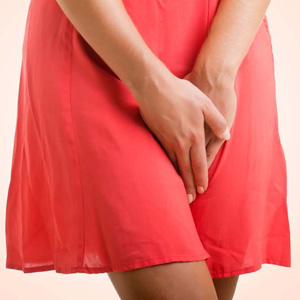Bacterial Vaginosis
 The difference between may be confusing Bacterial Vaginosis and Yeast infections such as thrush can have very similar symptoms. The cause is completely different, and for this reason, the treatment required is different.
The difference between may be confusing Bacterial Vaginosis and Yeast infections such as thrush can have very similar symptoms. The cause is completely different, and for this reason, the treatment required is different.
Thrush is a yeast infection caused by an imbalance of yeast or excessive growth of vaginal fungi. Bacterial vaginosis caused by a bacterial imbalance or a bacteria. Bacterial vaginosis is more common than a yeast infection and thought to affect 12-30% percent of woman.
The vagina always has bacteria present, bacteria required to keep the vagina healthy known as good bacteria. The vagina is a muscle in the form of a tube this muscle runs from the womb opening (cervix) to the external sexual organs (vulva). When a woman has bacterial vaginosis, it causes the balance of bacteria to change, causing Lactic Acid bacteria (less Lactobaccilli).
- other types of bacteria to overgrow
- change in the PH balance causing it to be to alkaline
It is thought that only 50% of woman suffering from bacterial vaginosis suffer from symptoms caused by the bacterial imbalance. Symptoms of bacterial vaginosis can vary from mild, to chronic some symptoms can include:
- inflamed skin around the vulva and vagina
- change in vaginal discharge
Vaginal discharge is the key to diagnosis the doctor will use this to determine whether it is a yeast infection or bacterial. Discharge caused by Bacterial vaginosis is different in appearance and smell to a yeast infection. Where as thrush usually causes thick white curd like discharge bacterial vaginosis cause it to be grey in colour and very foul smelling.
Your GP or local sexual health clinic may make the diagnosis from your description of the symptoms or by an internal examination. However if, sexually active swabs may be taken as a precautionary measure to gain a definite diagnosis. This is to rule out other infections which can cause, unusual discharge such as gonorrhea.
The test performed by your GP or healthcare professional at a sexual health clinic, a swab, or a small plastic instrument in the shape of a loop to take cells from the vagina walls. These will be then sent off to test for bacterial vaginosis. The doctor may also use a strip of special paper to test the PH levels of the vagina.
It is important to note that bacterial vaginosis or thrush is not a sexually transmitted disease, and bacterial vaginosis is still not completely understood. Research has shown possible indicators that make infection more likely. Statistics show that bacterial vaginosis is more likely to occur in a woman who is sexually active, smoke and have the use of certain hygiene products.
Bacterial Vaginosis is easily treatable with the use of antibiotics, if taken correctly they can be effective in up to 90% of cases. There is no evidence to support the claims that probiotics as the ones found in certain yoghurts have any benefit for the treatment of bacterial vaginosis.
Complications if Bacterial vaginosis has been left untreated?
Research indicates that bacterial vaginosis can be contributor to other conditions such as the following:
Pelvic inflammatory Disease- can cause pain in the abdominal area and swelling to the female genital tract.
Tubal factor- damage to the fallopian tubes which can lead to infertility
STI's- There has been some evidence to show bacterial vaginosis can make you more susceptible to certain Sexually transmitted diseases such as chlamydia, genital herpes and gonorrhea.
Complications in pregnancies- there is an increased risk of pregnant woman with bacterial vaginosis of having a miscarriage, premature birth , postpartum endometriosis after the birth
Prevention of Bacterial Vaginosis
Preventing bacterial vaginosis is hard to pinpoint due to the fact the cause of this infection is not fully understood. There are certain things a woman can do, statistics show it lowers the risk of infection,
Safer Sex
keep partners to a minimum
practice safe sex by wearing a condom
do not share sex toys
Personal hygiene
avoid using scented soaps or perfumed bath soak
avoid the use of certain vaginal products such as vaginal deodorants try to use a more gentle washing detergent for underwear
By taking steps to avoid upsetting the natural good bacteria present in your vagina you are less likely to develop bacterial vaginosis.
|